Clematis 2 pruning groups: the best varieties, tips for caring for them
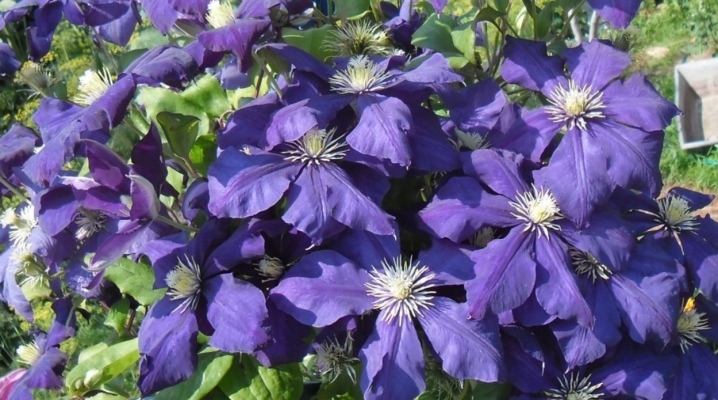
Clematis or clematis belong to three different pruning groups. Clematis of the 2nd pruning group is considered the most effective in terms of decorative qualities. At the same time, this is one of the most whimsical groups in terms of planting and leaving. Clematis of the second group are quite numerous in varietal terms. Finding them in the store is not difficult. Let's take a closer look at their best varieties, as well as tips for caring for them and how to prune them correctly.
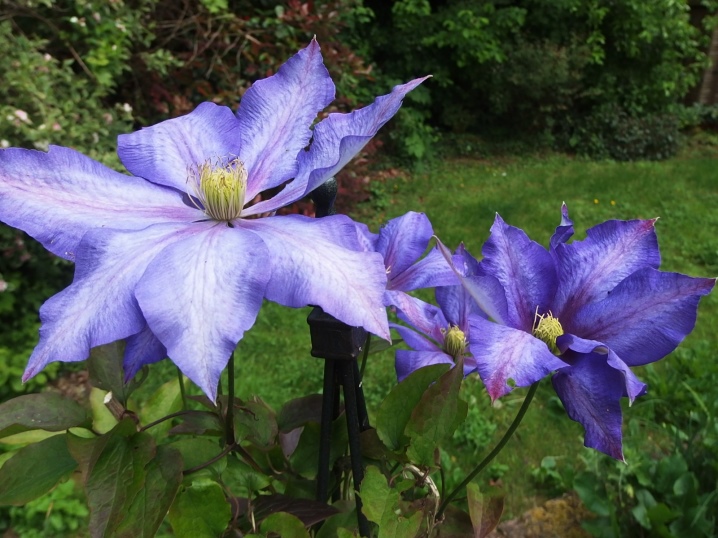
Peculiarities
This group of clematis retains last year's shoots that bloom in the new season. It is more difficult to care for them than for other clematis. Most often, these are not domestic varieties that tolerate cold winters well only under reliable shelter. But sheltering them for the winter is not enough, in any case, the splendor of flowering will not be the same as in warm regions.
These representatives of the flora grow much more slowly, it will take a long time to wait for a spectacular flowering. This means that in a few years only one or two flowers will appear, the number of which will grow every year.
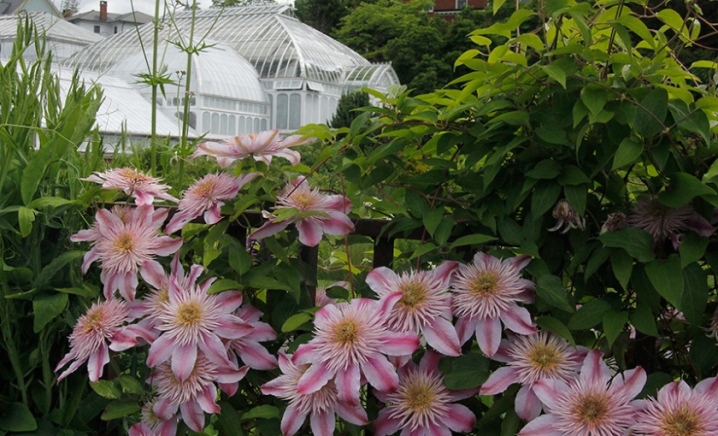
Only after 5 years can we expect a small but sufficient number of inflorescences. But their appearance will be so luxurious that all the work will pay off with admiration. Primroses appear at the bottom of the plant, the height will reach one and a half meters in the first years. Flowers of this group are varied in shape and color: with double, semi-double. Flowering can be observed, as a rule, twice: at first, buds are tied on the shoots of last year, closer to autumn - on newly formed ones. The second flowering period is weaker.

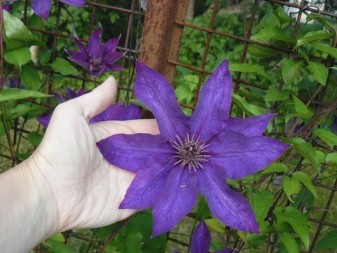
Pruning rules
At the beginning of summer, at the end of the first stage of flowering, the first pruning is carried out. In this situation, part of last year's growth is removed. If this is not done, then the second stage will be meager. The second pruning is that almost all branches are removed by 50%. Most often, this should be done in the fall, when the plant has already faded. This type of clematis hibernates poorly, so they need to be covered with high quality.
Periodically, about once every five years, the shrub is cut quite aggressively. Almost all shoots are removed to the ground. This is necessary in order for the bushiness to be more developed and effective. If you skip this stage of care, the bush will be bare at the base. True, in the coming year, flowering may not be at all or be minimal.
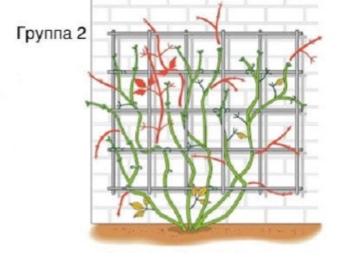
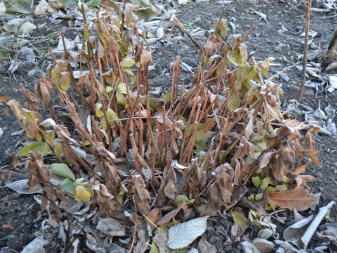
How to care?
If you properly cover clematis and provide regular feeding, a ten-year-old bush will already be completely covered with flowers. For a rich flowering, it is very important to preserve the whips, since many dangers lie in wait for them, namely:
- they can break when in autumn you separate the whips from the supports, the weave is very strong and strong;
- thin whips often break in the base area, which can be caused by wind or careless handling;
- in cold weather, the buds may not ripen, but under the grassy or deciduous layer of the lash, the lashes grow;
- they are often damaged by mice, which like to settle in the middle of the bush.
You can often observe recommendations for cutting the lash to half a meter in length, but then flowering can only be observed at the bottom of the bush.

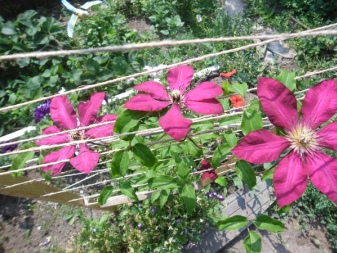
Despite the whimsicality and exactingness of the plant, you should not refuse to breed this representative of the flora. It is important to know such basic features of group 2 clematis as:
- most of them in the Russian climate do not grow too high, on average up to 2 m;
- this is not the best option for decorating outbuildings;
- in the foreground of the flower bed, they may not please with flowering in the first years;
- partial shade and even more so the shade is not suitable for this species;
- when choosing a place for planting, take care of sufficient area for the roots, there should not be plantings;
- they need to be covered in the same way as roses, in an air-dry way;
- complex feeding is necessary twice a year.
If these features are not taken into account, then the growth of clematis will be slowed down, flowering will be minimal.
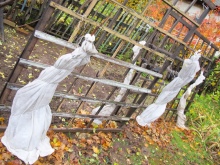
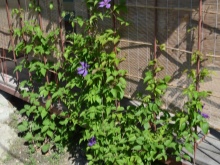
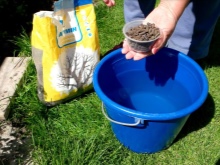
Diversity
"Daniel Deronda"
This variety has the following features:
- bred by English breeders in the 19th century;
- rather large plants, from 15 to 22 cm;
- the color scheme is bluish with a purple tint and a faded blue center;
- it is distinguished by a beautiful semi-double coat, anthers are yellowish-cream;
- blooms from May to September, intermittently;
- refers to the fast-growing;
- if the lashes are preserved in the fall, the semi-double is preserved for the next year.
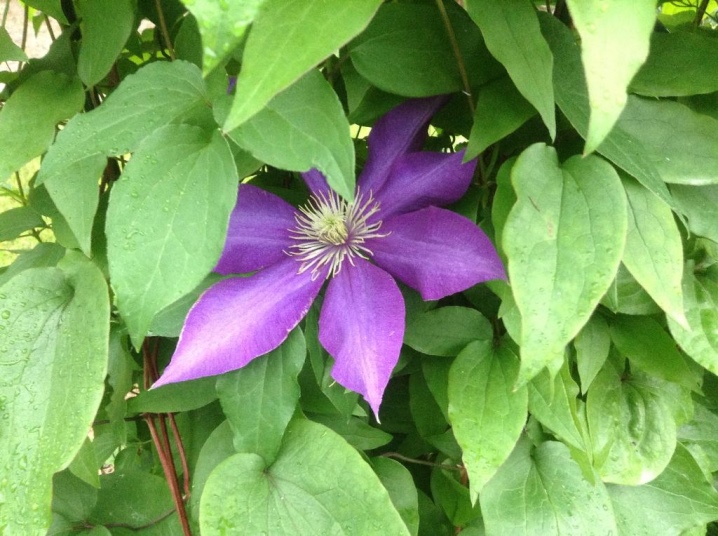
"Children of Warsaw"
This variety attracts attention with such features as:
- bred in Poland;
- very bright flowering, inflorescence size - up to 17 cm;
- the color in spring is light violet, by autumn it acquires dark crimson shades;
- in the center - a strip;
- anthers are made to match the petals, the threads are pink, the middle is fluffy;
- blooms at the beginning of summer, withers in autumn;
- height - up to 2.5 m;
- slow-growing variety.
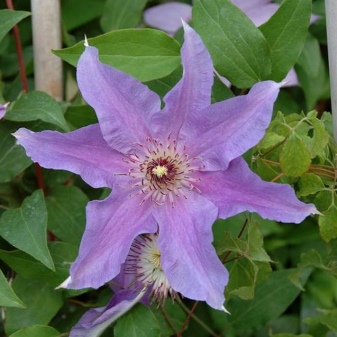

"Empress"
This variety has the following characteristics:
- the English variety was bred in the 90s of the twentieth century;
- large flowers - up to 15 cm;
- bicolor - rose with lilac;
- blooms in April, the process continues until September;
- the shade can change depending on the growing conditions, it can cast green;
- maximum height - 2 m.

"Royalty"
This variety attracts attention with the following features:
- grown in the UK;
- very large flowers - up to 20 cm;
- the color is violet with purple or blue, there is a faded strip in the center;
- in the spring, the inflorescences are semi-double, by autumn they become smallish;
- height - up to 2.5 m;
- grows slowly.
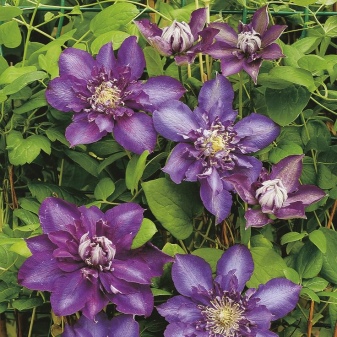
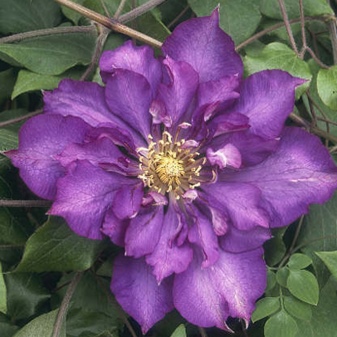
"Solidarity"
This variety has the following characteristics:
- Polish variety;
- flowering size - up to 16 cm;
- the color is juicy, deep red, velvet-type petals; wavy edges, light stripe in the center;
- bloom from May to September, with a break;
- height - up to one and a half meters;
- grows slowly.
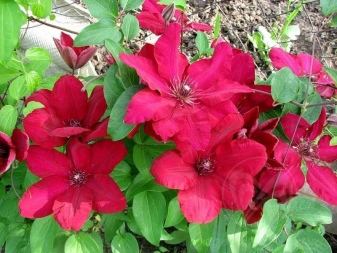
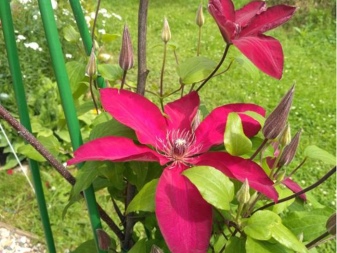
"Stefan Franchak"
This kind differs in such features as:
- another result of the work of Polish breeders;
- not too large, up to 10 cm;
- the color is bluish with pale strokes, at the center it is snow-white;
- bloom in June and July;
- height - up to 2 m;
- abundant flowering and good growth rates.
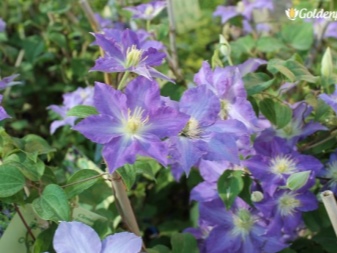
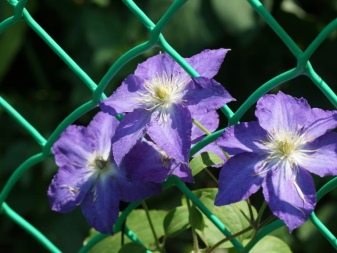
"Yulka"
This variety is popular with gardeners. due to the following characteristics:
- bred by Polish breeders;
- size - up to 15 cm;
- the color of the shade is violet with a strip of dark red tint in the middle;
- bloom all summer;
- height - up to 2.5 m;
- grows slowly.
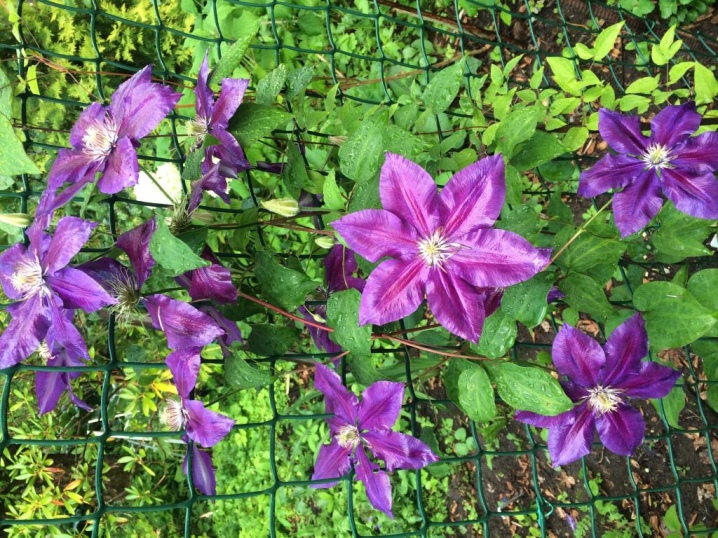
"Dancing Smile"
This species has features such as:
- not too large flowers of the most delicate shade of rose;
- very attractive, although they do not like frost too much;
- type of flower with terry;
- bush of compact size.
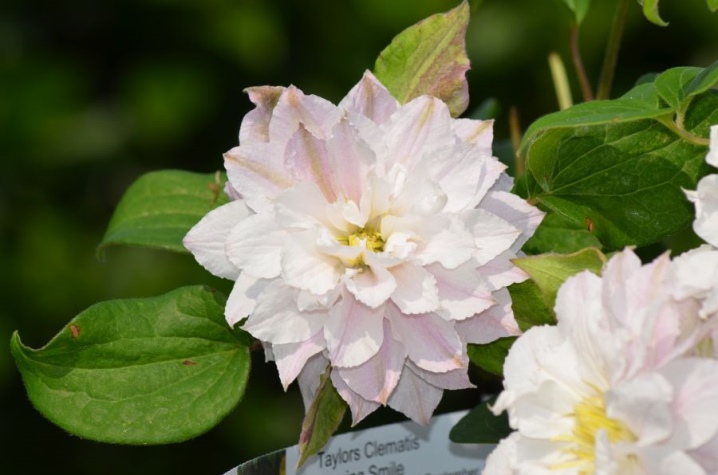
"John Paul"
This variety is like due to the following characteristics:
- blooms profusely;
- color - alabaster;
- there is a variety with small, and there is with large inflorescences;
- the height also depends on the species;
- thermophilic.
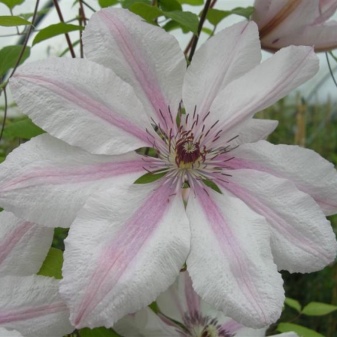
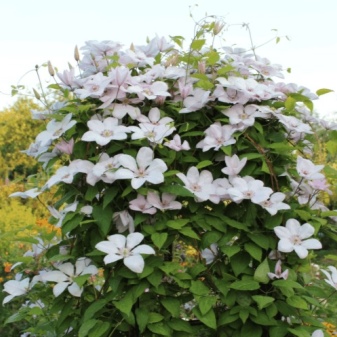
Winter hardy varieties
Not all clematis varieties of this group winter well in the middle lane. You can safely grow the following varieties:
- "Azur Ball" - incredibly sophisticated blue color, flowers reach up to 17 cm, with double or semi-double;
- "Ai-Nor" - blooms for a long time with large pinkish flowers, perfectly tolerates cold;
- "Akaishi" - blooms early, has sepals of two shades of lilac and violet, height - up to 3 m;
- Allana - bred in New Zealand, very popular in our country, despite not too abundant flowering with red buds with a lilac shade;
- "Andromeda" - in warm regions, this variety blooms with semi-double flowers, in the middle lane they have simple but large buds with a white and pink tint;
- "Anna German" - large variety, flowers with lilac terry with yellowness in the center, undemanding to care for, tolerates frost well;
- Anna Carolina - bred in Poland, size up to 20 cm, snow-white color, height - up to 2 m;
- "Asao" - large pink inflorescences, up to 20 cm, look very impressive, can be ordinary or semi-double;
- "Ball of Flowers" - a domestic variety with an average degree of winter hardiness, but even if last year's shoots freeze over, the newly formed ones still bloom, the flower size is up to 21 cm, the color is lilac;
- "Ballerina" - one of the most beautiful varieties, a diamond-type flower combines the contrast of snow-white petals and a red center;
- "Baltic" - the Polish variety, blooming with large inflorescences of purple tide, can fade, height - up to 2.5 m;
- "Gabriel Narutovich" - this Polish variety has been around for many years, but it is still in demand due to its beautiful lilac shade interspersed with violet;
- "Henry" - bred back in the 19th century, but its snow-white flowers are incredibly beautiful, which is why it is so relevant;
- "John Paul" - competitor of the previous variety in terms of showiness and expressiveness of snow-white flowering, height - up to 4 m;
- "Jernsey Cream" - another white variety, in which there are cream and greenish shades, perfectly tolerates the winter of the middle lane;
- "Multi Blue" - one of the most popular varieties, unpretentious, beautifully flowering, with terry, lilac-purple color, size - up to 15 cm;
- "The president" - perfectly tolerates cold, rather persistent, suitable for beginners, the size reaches 20 cm, the color is violet with blue;
- Fujimusumi - incredibly beautiful blue flowering, the variety was bred in Japan, the color varies from lilac to heavenly and blue, yellowness in the center, tolerates winters well, height - up to 3 m, size - up to 15 cm.
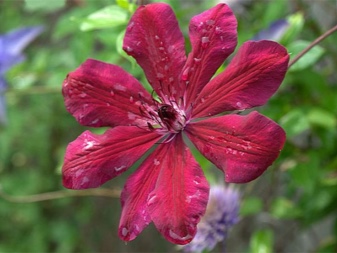
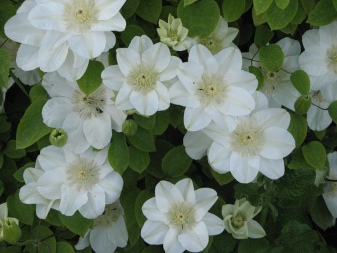
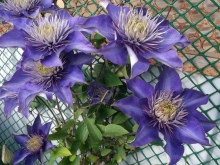
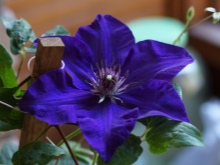
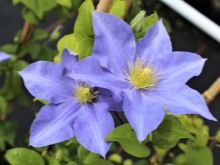
For information on how to properly cut clematis of the 2nd group, see below.







































































































The comment was sent successfully.